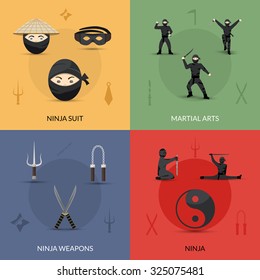Discovering The Rich Heritage And Spiritual Dimension Of Fighting Style: A Complete Assessment
Discovering The Rich Heritage And Spiritual Dimension Of Fighting Style: A Complete Assessment
Blog Article
Material Composed By-Moesgaard Montoya
Enter the ancient globe where martial arts were substantiated of necessity in varied areas. Cultures crafted one-of-a-kind combating designs intertwined with historic contexts. Methods progressed over centuries through committed method and social exchanges. Today, contemporary martial arts blend traditional aspects for optimal efficiency. Philosophically, martial arts stress technique, self-improvement, and harmony. Regard, humbleness, and equilibrium are foundational principles guiding practitioners in the direction of development and strength. Explore the midsts of this rich history and philosophy to uncover the extensive influences shaping this long-lasting self-control.
Origins of Fighting Style
Fighting style originated in various regions around the globe, developing as useful battle systems to resist dangers. These old battling styles were developed out of requirement, with each culture crafting methods suited to their one-of-a-kind settings and challenges. From the grappling arts of Jujutsu in Japan to the striking techniques of Martial art in China, martial arts were deeply intertwined with the historical, social, and social material of their particular societies.
In Japan, the samurai course polished martial arts like Kenjutsu, the art of the sword, which later advanced into the a lot more promoted type of Kendo. At the same time, in Brazil, Capoeira emerged as a blend of dance and combat, developed by enslaved Africans as a method to resist injustice. Each martial art lugs with it an abundant history and ideology, mirroring the worths and beliefs of the people that exercised them.
As you delve into the origins of martial arts, you discover a tapestry of human ingenuity, durability, and the unrelenting spirit of warriors throughout time.
Advancement of Methods
Through centuries of technique and refinement, battle strategies within different martial arts have undertaken an extensive development. From old designs like Kung Fu and Martial arts to extra modern disciplines such as Brazilian Jiu-Jitsu and Krav Maga, the evolution of strategies has actually been driven by a combination of cultural influences, useful applications, and technical developments.
One considerable facet of this advancement is the cross-pollination of methods between different martial arts. For instance, strategies from conventional Japanese Jiu-Jitsu were incorporated right into the production of Judo by Jigoro Kano in the late 19th century. click now blending of designs has led to the growth of hybrid martial arts like Mixed Martial Arts (MMA), which integrate elements of striking, grappling, and entry techniques.
In is it too late to start martial arts , the advancement of methods has been formed by the enhancing emphasis on performance and effectiveness in combat. Specialists have actually continuously sought to refine their techniques via strenuous training, trial and error, and competitors, leading to the advancement of extremely specialized and reliable combating designs. On the whole, the advancement of techniques in martial arts mirrors the dynamic nature of battle and the ongoing pursuit for renovation and advancement.
Thoughtful Structures
Discovering the underlying thoughtful principles of martial arts provides insight right into their core values and assisting ideas. At the heart of many martial arts self-controls is the idea of technique itself. By training your mind and body to act as one natural unit, you cultivate technique that extends beyond the dojo or fitness center into day-to-day life. This discipline encompasses respect, humbleness, and self-control, shaping not just your physical abilities however also your character.
One more basic philosophical foundation in martial arts is the idea of continual self-improvement. The journey of understanding a martial art is endless, with specialists frequently making every effort to much better themselves, both literally and mentally. This concentrate on growth promotes strength, willpower, and a growth way of thinking that can be applied to all facets of life.
Furthermore, martial arts stress the relevance of consistency and equilibrium. Techniques are created to utilize a challenger's energy versus them, highlighting the concept of yielding and rerouting force instead of fulfilling it head-on. This philosophy extends to interpersonal connections, promoting calm resolutions and good understanding. By accepting these thoughtful foundations, martial artists not just enhance their combat skills yet additionally grow a way of living centered on individual development, regard, and consistency.
Verdict
Finally, the history and ideology of martial arts provide an abundant tapestry of practice, technique, and self-improvement.
Take for example the story of Bruce Lee, that changed martial arts by mixing various styles and approaches to create his own one-of-a-kind form of Jeet Kune Do.
Through dedication and innovation, martial artists remain to press limits and motivate others to reach their full potential both in combat and in life.
